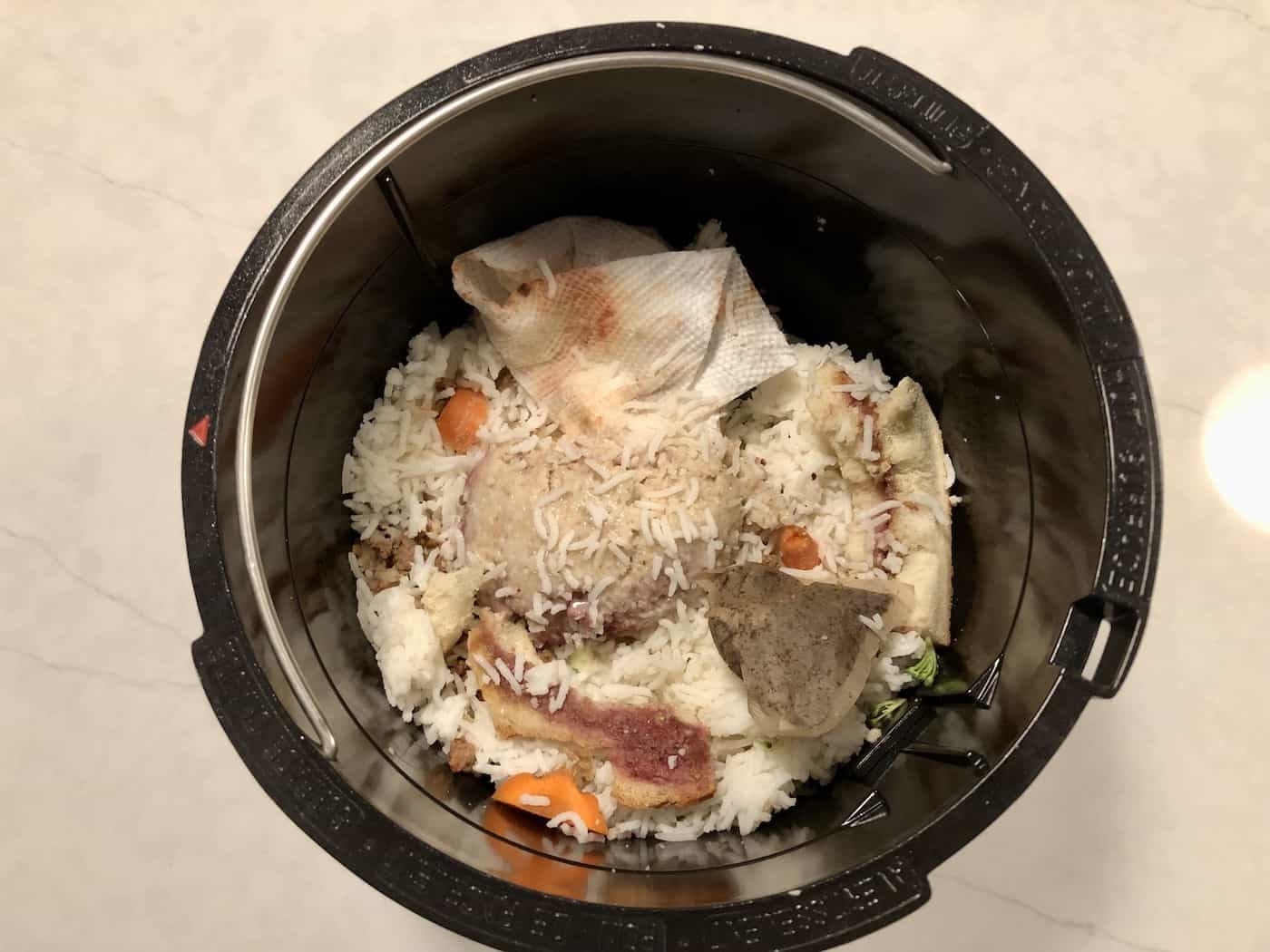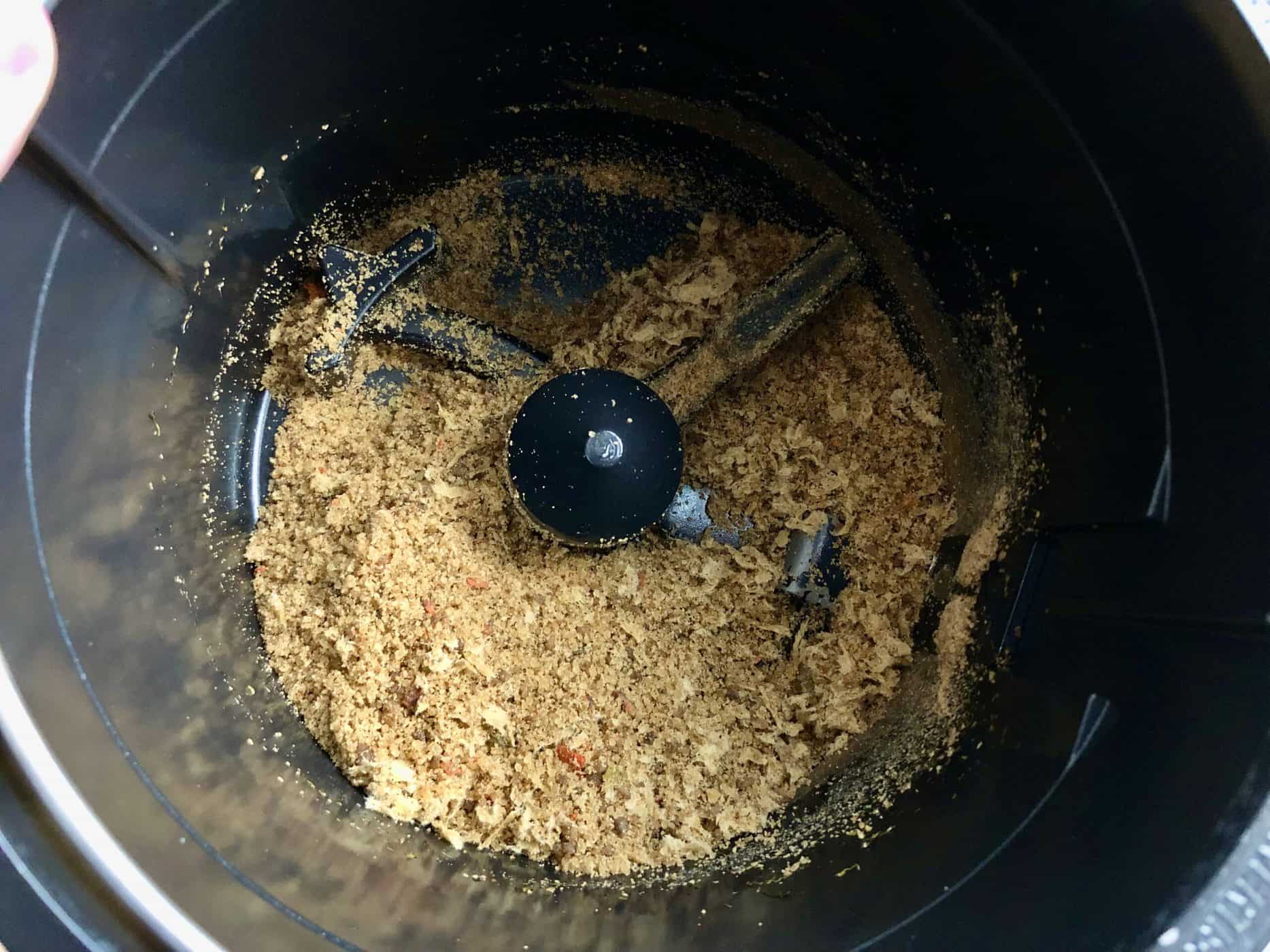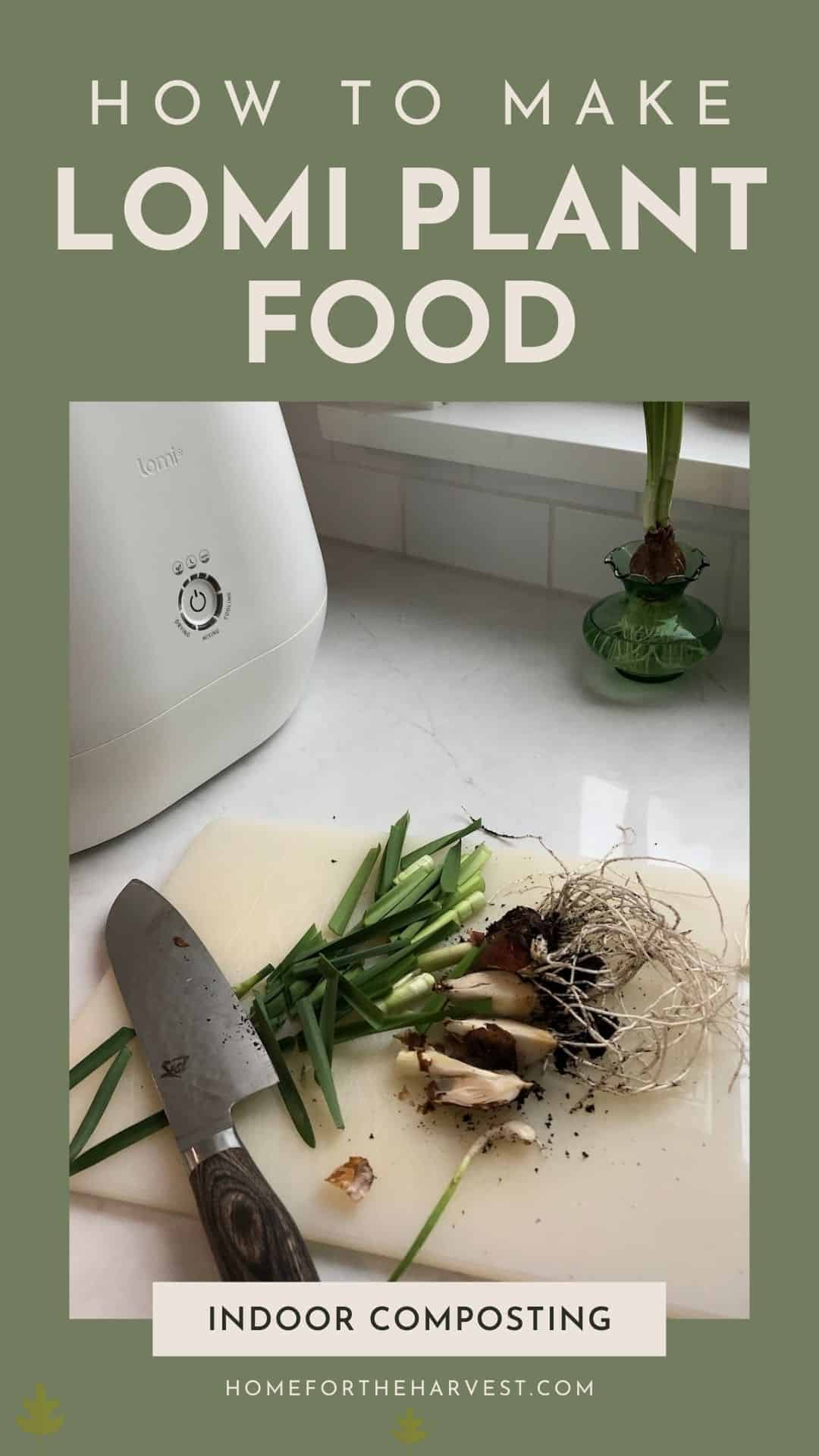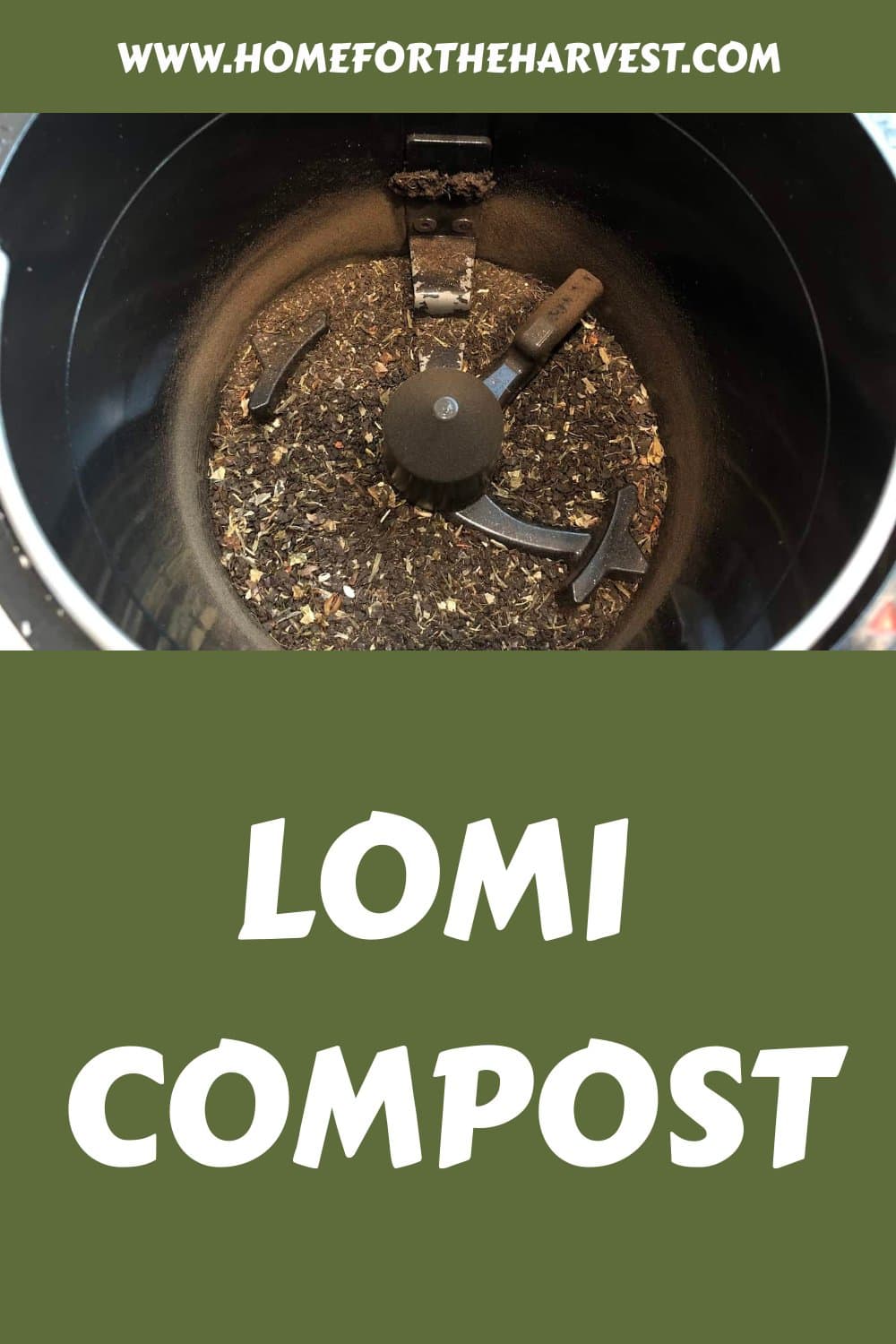Lomi compost is the end product produced by Lomi’s “Grow Mode” composting cycle. Lomi compost is a dry blend of variable particle sizes composed of degraded plant matter and other organics added to the cycle. As with any compost, the nutrient content of Lomi compost is variable due to ever-changing inputs. It’s a sustainably produced source of organic matter that captures the plant nutrients and microorganisms in food waste and recycles these resources into a tilth-improving soil amendment for gardening.
Lomi compost basics
Lomi Compost is a soil additive produced by Lomi composters. These electric countertop units take kitchen waste such as plate scrapings, leftovers, and even houseplant trimmings and turn them into a compost product that can be used to add organic matter, nutrients, and beneficial microbes to your garden. The Lomi Mode that produces Lomi Compost is called “Grow Mode.” One cycle of Grow Mode takes about 20-24 hours in total.
Lomi compost is made out of whatever was placed into the Lomi bucket prior to running the cycle. This can include anything from fruit and vegetable scraps to meat, dairy, and mixed plate scrapings. It also includes the LomiPod that is added to the bucket, which adds beneficial bacteria, fungi, and other microorganisms.
Lomi’s Grow Mode creates compost through an automated process, including physical grinding, biodegradation via microorganisms, and added heat and oxygen. Lomi Fresh plant matter is often about 80%-90% water. Lomi uses heat to dry out the plant matter, leaving a volume that represents about 20% of the volume that initially went into the cycle.
Lomi compost is typically a medium-brown compost of variable particle size. The compost is mixed into potting soil and then ready to be added to houseplants or your outdoor garden. Lomi compost adds organic matter to the garden soil as well as nutrients and microbes from the decayed food waste.
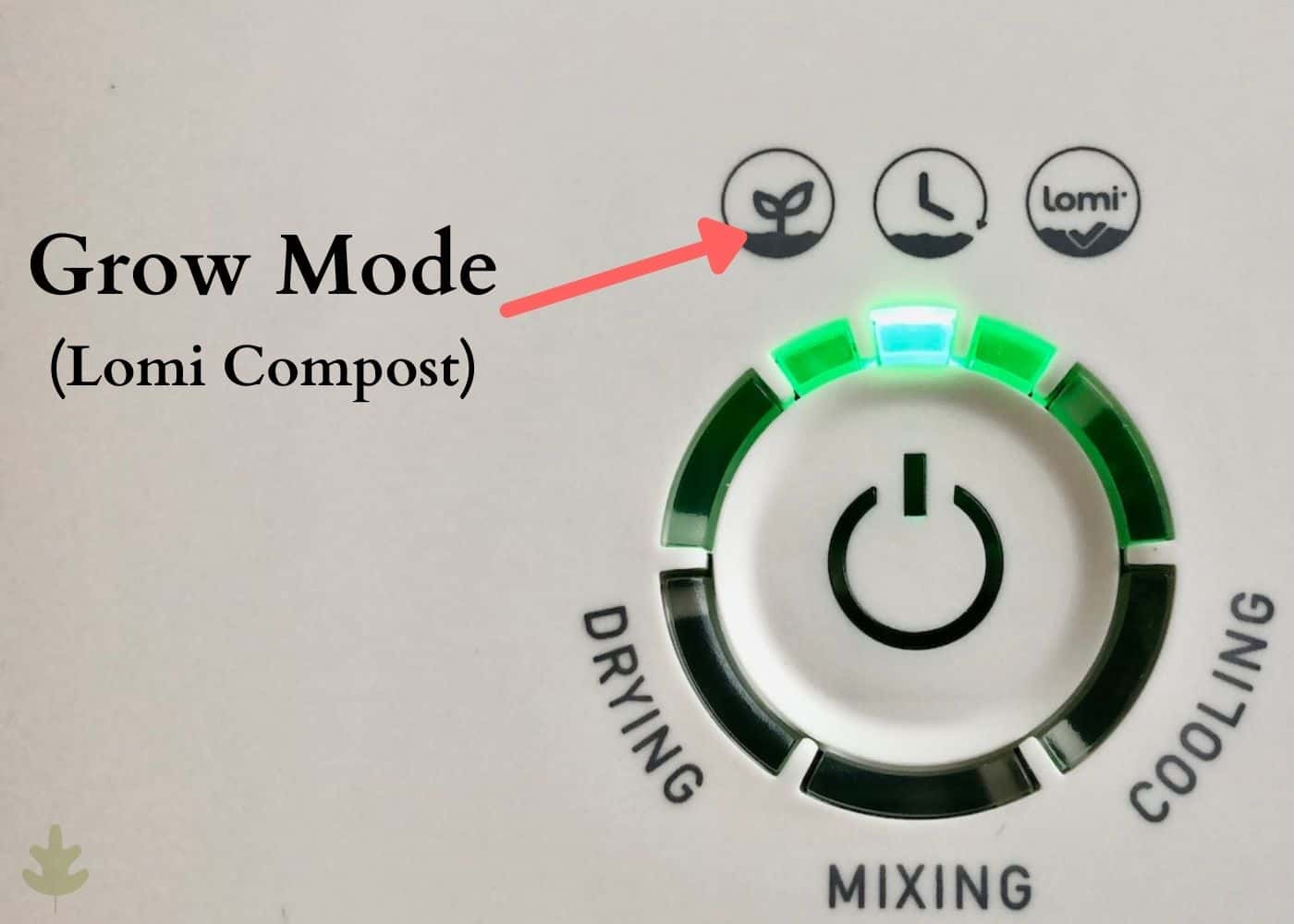
Disclosure: This Lomi unit was gifted to me by Pela, the manufacturer of Lomi.
Tips for making Lomi compost
Here are some tips for using a Lomi machine to make compost for your indoor or outdoor plants.
1. Always use “Grow Mode”
Always use Lomi’s “Grow Mode” cycle type if you’d like to use the end product as compost. Grow Mode is the third of three cycles available. The end product from the first two cycles (Eco-Express Mode and Lomi-Approved Mode) is not a finished compost product and is not meant to be used directly on plants.
2. Chop organic matter
As with outdoor composting, chopping up bulky materials into smaller pieces can give the composting process a head start. Use a kitchen knife and a cutting board to roughly chop up large items like broccoli stems, watermelon rinds, or houseplant stems. This increases the available surface area for the microbes to access for decomposition.
3. Mix up greens & browns
Also as with outdoor composting, try to add a varied mix of organics into the bucket. Alternate nitrogen-rich leafy green veggie bits with carbon-rich dried brown leaves from your houseplants. Varied inputs will result in a more balanced end product than using a single input in the bucket.
4. Add a LomiPod
Always add a LomiPod to the Grow Mode cycle. Wait until all the organics are in the bucket and then place a single LomiPod on top. Gently pour a little bit of water (less than a quarter cup, see Lomi Setup Tips for details) on the LomiPod to activate it. The LomiPod should start to effervesce/bubble a bit like a bath fizzer.
Each LomiPod contains Pela’s blend of beneficial bacteria, fungi, and other compost-assisting microorganisms. These additives increase the rate of decomposition that occurs inside the machine to help make the Lomi Compost end product usable in your garden.
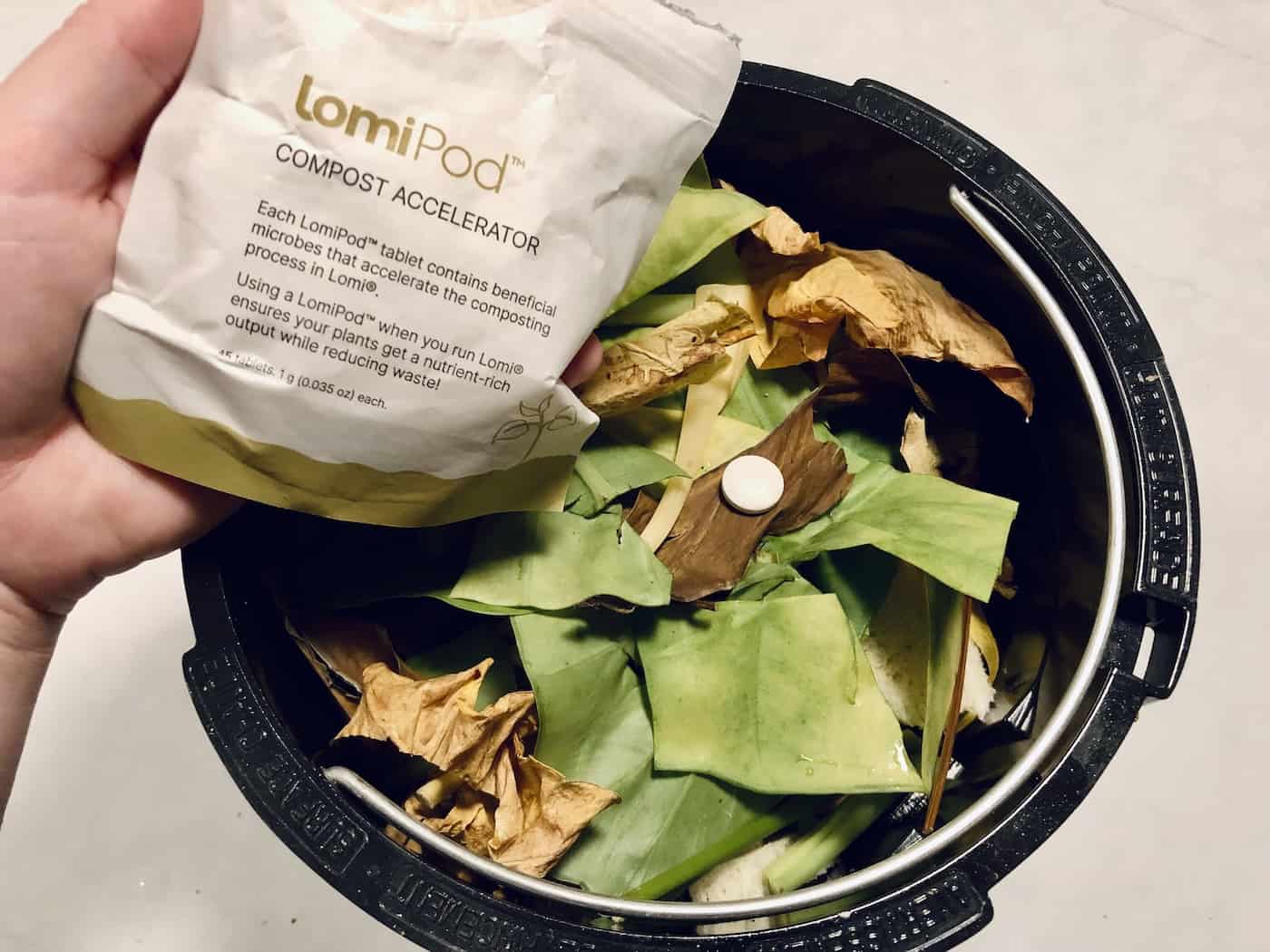
How Lomi makes compost
Composting is a human-controlled version of the natural decomposition of organics that occurs in nature all on its own. Humans typically compost to “speed up” the natural decomposition in ecosystems to manage waste and/or produce soil amendments. Fully amorphous decomposed organic matter in natural ecosystems is typically referred to as humus, while decomposed organic products made by humans are called compost.
While humans use many different composting methods, most methods involve adding oxygen (usually by tumbling or turning) and some sort of temperature control (like creating a compost “heap” to increase the core temperature). Lomi’s composting process uses an electric motor for grinding and aeration, plus automated temperature and humidity control.
While outdoor compost heaps/tumblers are turned by hand, Lomi has built-in grinding arms within the bucket. Grinding breaks the waste into smaller pieces with more surface area while adding oxygen to the organics. The microorganisms that naturally exist in our food can break down the food waste more quickly when it is in small pieces and when the microbes have adequate oxygen. Aeration is increased with airflow through the filters, and the composting chamber’s environmental conditions are kept within optimal set amounts for temperature and humidity.
“Lomi contains a lot of fancy patent-pending sensors to create the MOST nutrient-rich dirt possible inside your home! Lomi begins by compacting the contents, while temperature and humidity sensors optimize the microbial environment to intelligently break down the food scraps without losing any vital microorganisms. This leads to mass and volume reduction, while providing continuous airflow as our heavy-duty grinder churns the waste.”
About Lomi, Pela Support
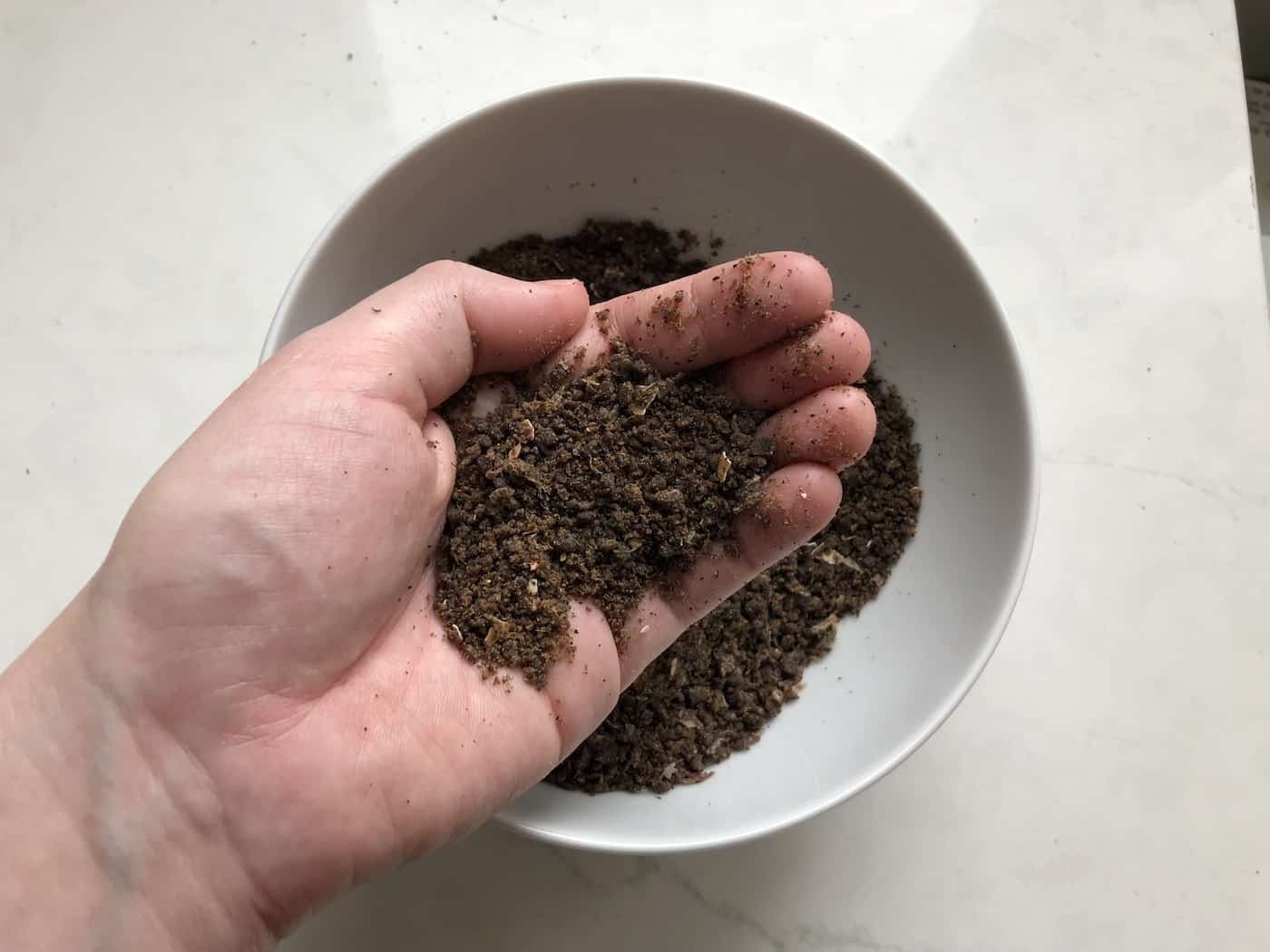
Is Lomi compost real compost?
Lomi compost is real compost. Compost is simply the end product of the controlled decomposition of organic material. Compost can be made by manually creating a heap, turning a tumbler, or using a machine to automate the accelerated decomposition.
Compost comes in many forms. While naturally occurring humus in topsoil is amorphous, most human-made compost has some visible particles or decaying organic matter remaining. This is particularly true with immature compost. Compost is sometimes poured through a 1/2″ mesh screen to sort out any remaining large particles.
When most gardeners think about “real compost,” they are referring to the end product from a backyard compost tumbler, compost heap, or their annual autumn batch of leaf mold compost. These traditional composts are almost always made entirely with plant-based inputs, perhaps with a few shovelfuls of soil added into the mix. While this is the favored compost of many gardeners, this preference may partly be because it is the most familiar.
Compared to backyard compost, many bagged compost products sold to gardeners contain organic matter that is not sourced directly from plants. Inputs to store-bought compost can include anything from worm castings to cow manure and to more suspect ingredients like municipal sewage sludge/biosolids that are likely not approved for organic gardening by major certifying bodies. Most compost products include plant-derived components like decomposed byproducts from the lumber industry or grain processing. Some products are also tested to ensure the finished product does not contain high salts (a common concern with bulk compost).
The nice thing about Lomi Compost is that the gardener can control exactly what goes into it. It’s easy to make vegan compost if that is your goal. Alternatively, it’s also easy to incorporate meat scraps in an effort to re-create naturally-produced forest humus more closely than purely plant-based compost might. Lastly, if you’re avoiding synthetic chemical pesticides/herbicides in your food, you can be confident that you’re not adding them to your garden. Whatever your preference, you control what is going into your compost rather than a fertilizer company or the local municipality.
Compost plant food vs. Synthetic fertilizer
Homemade outdoor compost (and potentially Lomi Compost) tends to have lower nutrient content than synthetically produced fertilizer products. This is because the nutrients are from naturally occurring sources like plant matter, manure, and rocks rather than being synthesized in a chemical plant. The isolated nutrients in synthetic fertilizers are highly concentrated, while the nutrients in composts are bound in bulk organic matter.
Here are some examples of NPK nutrient ratios of compost products as compared to synthetic fertilizers:
NPK of commercial composts
- Coast of Maine Lobster Compost has an NPK ratio of 0.6-0.3-0.2
- R&M Organics Premium Organic Compost has an NPK of 1.25-1.0-
- O.N.E. Organic Compost has an NPK ratio of 3-3-3
NPK of synthetic fertilizers
- Miracle-Gro All-Purpose Plant Food has an NPK ratio of 24-8-16
- Scott’s Super Bloom Plant Food has an NPK ratio of 12-55-6
- Osmocote Smart-Release Plant Food Plus has an NPK ratio of 15-9-12
While it can seem tempting to opt for the higher numbers on synthetic fertilizer products, the decision is not as easy as simply choosing the fertilizer with the highest numbers. Synthetic fertilizers have the potential to “burn” plants due to the highly concentrated nutrients. They also don’t provide the useful organic matter bulk that adds tilth to your soil. Lastly, synthetic fertilizers are generally created from petroleum products rather than from naturally occurring byproducts like manure and sawdust.
Is Lomi compost more sustainable than conventional fertilizer?
Making your own Lomi Compost is almost certainly more sustainable than buying conventional fertilizer for your plants. The production of synthetic fertilizers is an industrial process that usually involves feedstocks such as natural gas and mined minerals. These extraction and chemical plant processes tend to be energy-intensive. They also tend to occur in large centralized chemical plants, leading to long shipping distances after the nutrients have been isolated.
“Nitrogen fertilizer is synthesized through a process that creates ammonia from natural gas. Currently, 5 per cent of global natural gas consumption is used for this purpose.”
All The Dirt: Reflections on Organic Farming, by Rachel Fisher, Heather Stretch, and Robin Tunnicliffe
Creating your own compost at home avoids having to use natural gas as a feedstock for nitrogen and mine and process additional inputs for other nutrients. It also avoids emissions related to packaging, storing, shipping, and selling fertilizer products. You’re able to complete the nutrient cycle in-house, even if your house is a small apartment in the city. Dilute your Lomi compost into your homemade outdoor compost and spread it as a 1″ thick top dressing on your lawn and garden to naturally increase nitrogen levels.
“The manufacture and application of fertilizers consumes over a third of the energy expended for agriculture in developed countries”
Mineral Nutrition of Plants: Principles and Perspectives, by Emanuel Epstein and Arnold J. Bloom
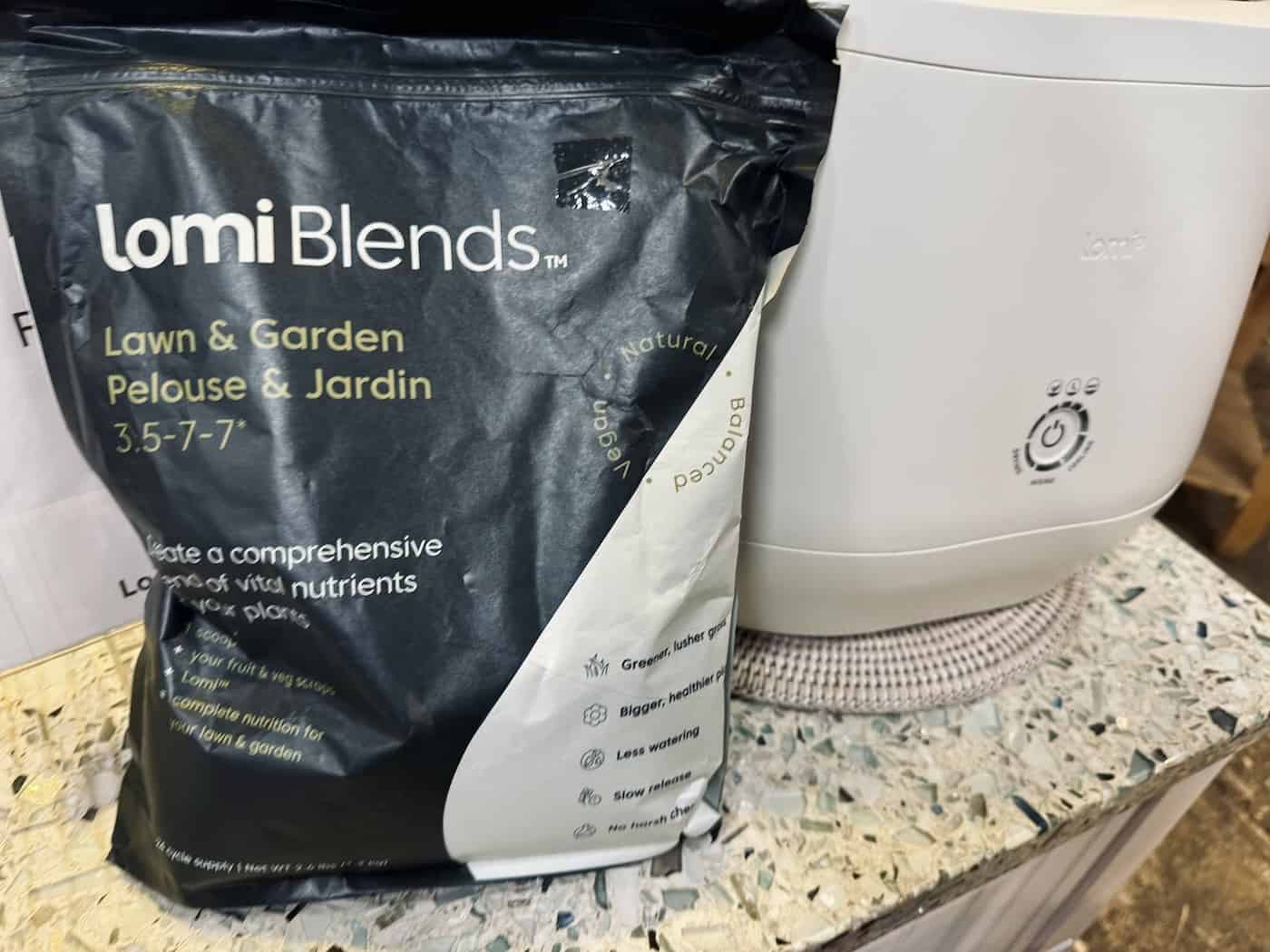
Nutrients in Lomi compost
The nutrients in your Lomi compost are a reflection of the organic materials that went into the bucket in the first place. The Lomi composting process removes much of the water from the organics, leaving a relatively dry mix at the end of the cycle.
The majority of dry plant matter is made up of carbon, followed by hydrogen and oxygen. The remaining elements, including macronutrients nitrogen (N), phosphorus (P), and potassium (K), make up only a small portion of the dry weight of plant tissue. Macronutrient content in plant tissue can vary widely between plant species and ecosystems. Nitrogen percentages in dry plant matter can vary from a low of a fraction of a percent in nitrogen-poor situations to a high of perhaps 3%-5% in exceptional conditions.
Important plant nutrients like nitrogen are typically the highest in the seeds of plants as the plants dedicate outsized resources to reproduction. There are also differences in nutrient content in different parts of the same plant. For instance, the above-ground tissues of plants tend to contain more nitrogen than below-ground tissues.
Lomi’s packaged compost product, “Lomi Blends,” has an NPK ratio of 3.5-7-7 (see photo above). To investigate the nutrient density of your own Lomi compost, work with a local agricultural or soil science laboratory to have a representative sample tested.
“If only 10% to 20% – lets say 15% – of a plant’s fresh weight is dry matter, and all but 10% of the dry matter is represented by carbon, hydrogen, and oxygen, it follows that all the other elements that make up the plant account for roughly 0.15×0.10=0.015, or a mere 1.5%, of its fresh weight. These elements represent the mineral composition of the plant – its content of nitrogen, phosphorus, sulfur, potassium, calcium, magnesium, silicon, and other elements taken up from the surroundings, principally the soil.”
Mineral Nutrition of Plants: Principles and Perspectives, by Emanuel Epstein and Arnold J. Bloom
Using Lomi compost on plants
Lomi Compost is easy to use on plants, whether they’re grown outdoors or indoors. The first step is to mix the Lomi Compost into your soil. Then you can use the soil in a number of different gardening applications around your home.
Mix Lomi compost with potting soil
Lomi Compost is not meant to be taken directly out of the bucket and poured into an existing potted plant. Instead, take the finished compost and mix it in with some soil. Lomi recommends mixing one part of Lomi Compost with ten parts of soil. I can attest to the importance of this – if you just pour Lomi Compost onto the top of the potting soil in your containers, it may grow a white mold as the nutrients are quite concentrated. Definitely dilute the compost by mixing it in with potting mix!
For plants in containers, this means mixing the Lomi Compost with a bagged potting soil product. Since Lomi Compost is almost entirely organic matter in most cases, it makes the most sense to mix it into a plain potting mix that contains perhaps only coco coir/peat moss for bulk plus some perlite for drainage. The Lomi Compost will add organic matter and nutrients to a plain potting mix that does not contain added organic fertilizer.
For outdoor plants in the ground, mix the Lomi Compost with whatever soil you use in your garden. This could be naturally occurring topsoil, a bulk raised bed mix, or a bagged garden soil product from the garden center.
“Grow Mode cycle is highly concentrated. You’ll want to temper this effectiveness by diluting it a bit. Most plants will thrive in a soil with a 1:10 ratio; one part Lomi compost to ten parts soil.”
What Is Lomi End Product?, Pela Blog
Ways to use Lomi compost on plants
Here are some ways to incorporate your Lomi Compost into your garden after mixing it in with some soil.
- Add it to your flower beds or vegetable garden prior to planting
- Use it to repot your houseplants
- Use it as a surface mulch in your garden if mixing with bulk organics
- Spread it on the lawn as a top-dressing before overseeding (especially if mixing with sand)
- Spread it on garden beds in the fall to enrich the soil prior to spring planting
“Don’t let the fact that not all the contents of your compost are fully decomposed stop you from incorporating compost into your garden. In fact, it’s a good thing to do because your compost’s abundant microbial activity provides benefits to your soil”
Composting for Dummies, by Cathy Cromell & The Editors of The National Gardening Association
Examples of homemade Lomi compost
Here are before and after pictures of three different cycle loads that went through Lomi’s “Grow Mode” cycle to produce Lomi compost. The compost from each load is quite different because the inputs are always different.
Example 1: Houseplants & food scraps
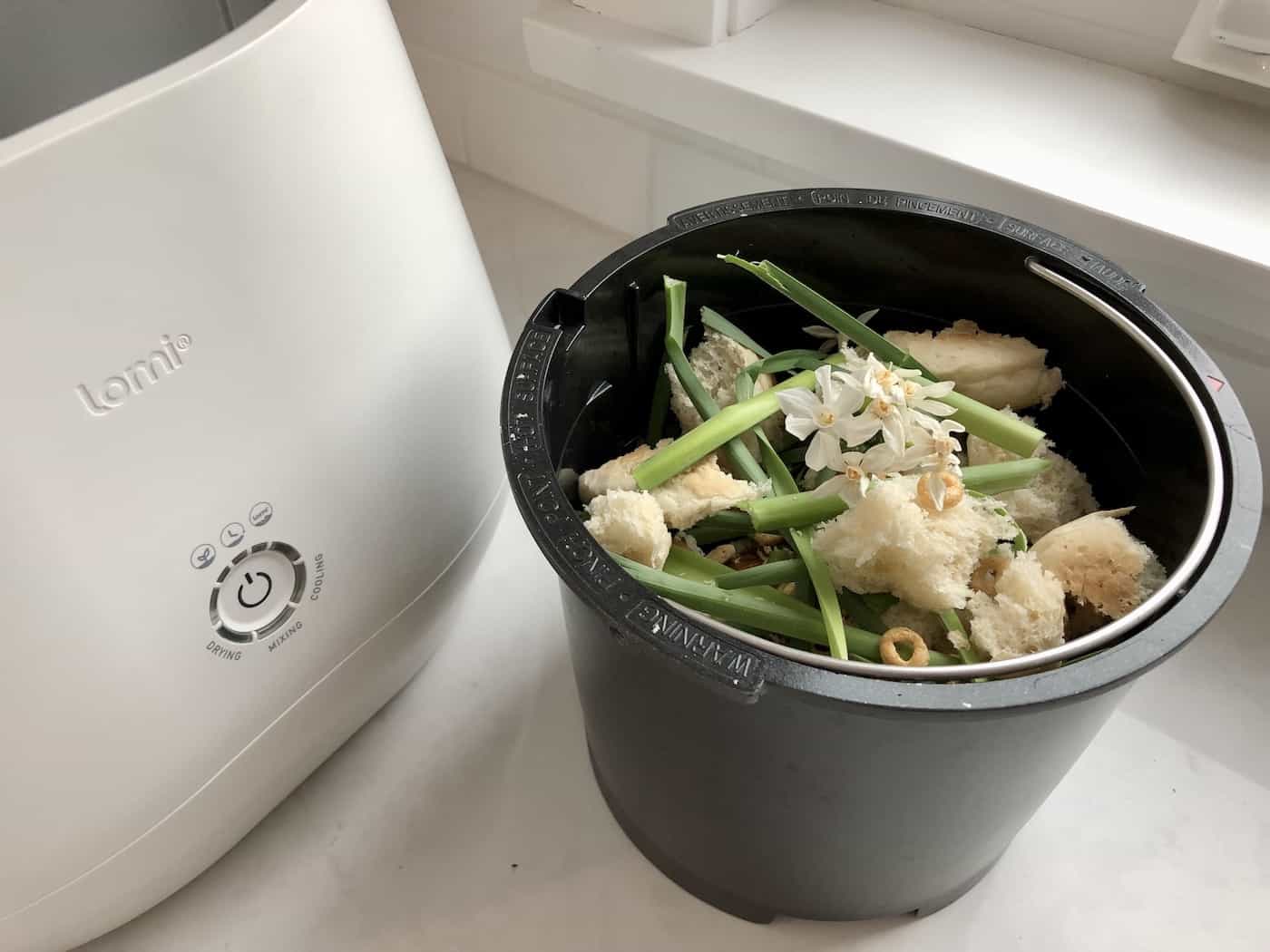
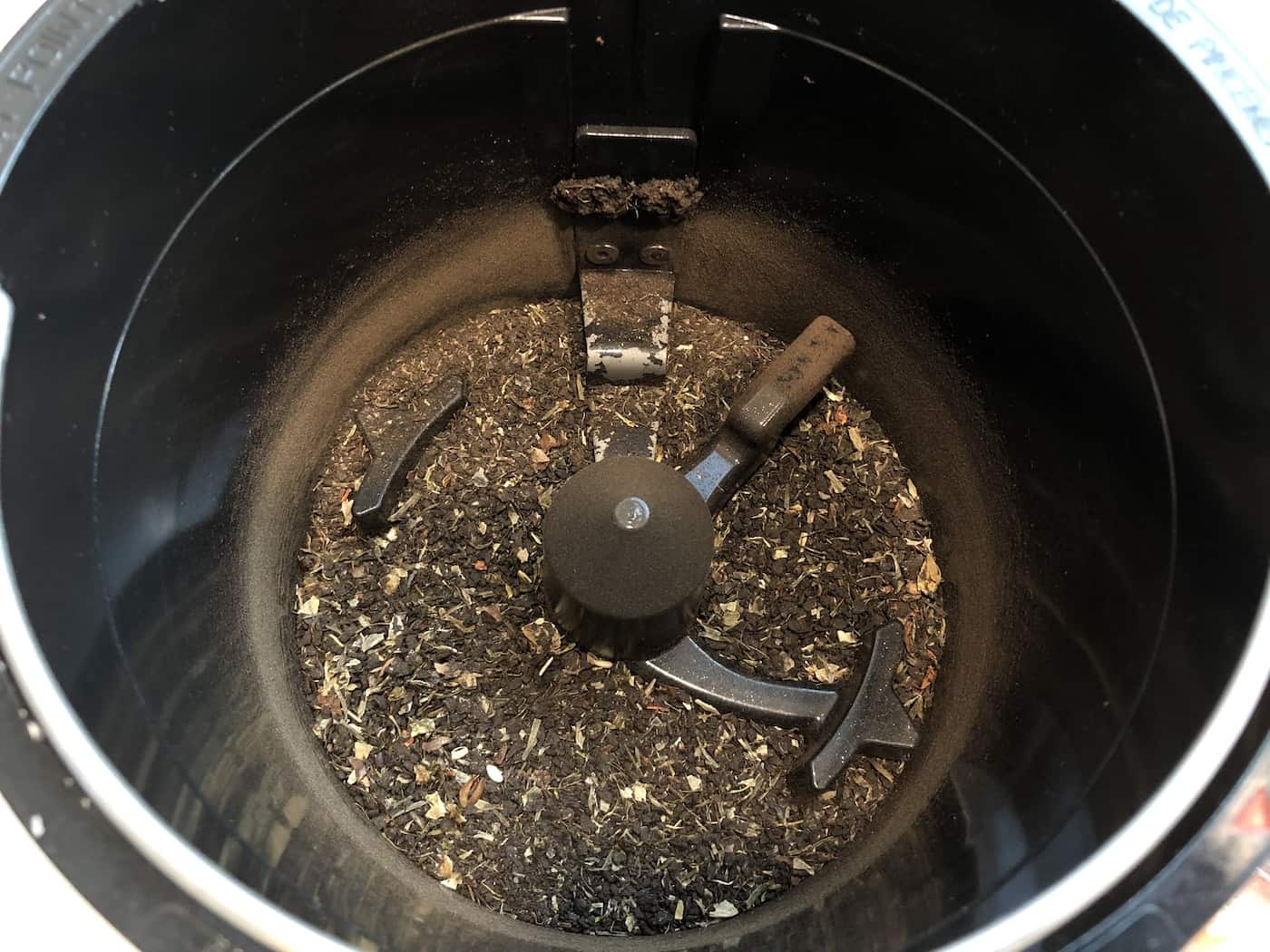
Example 2: Leftovers
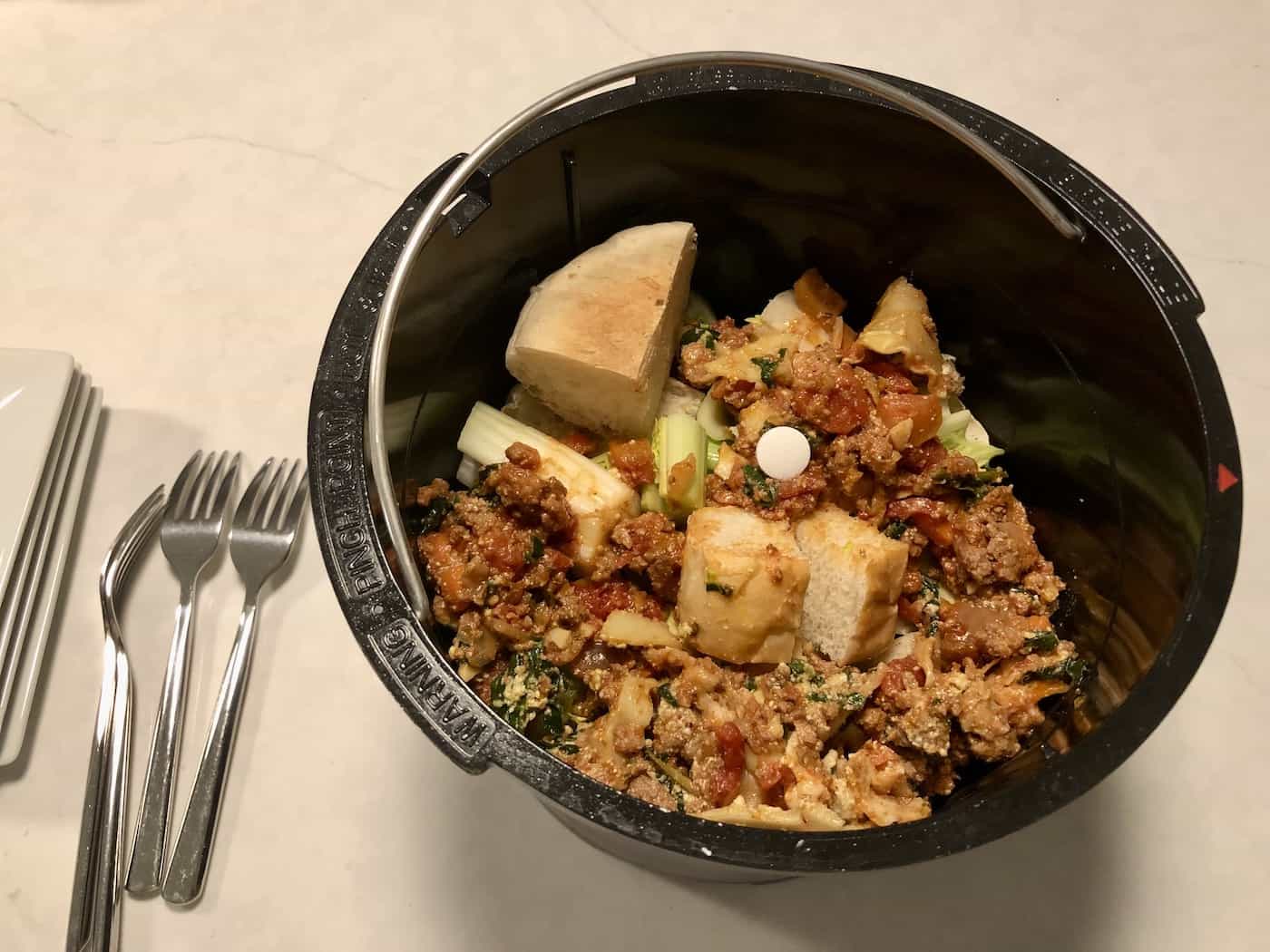
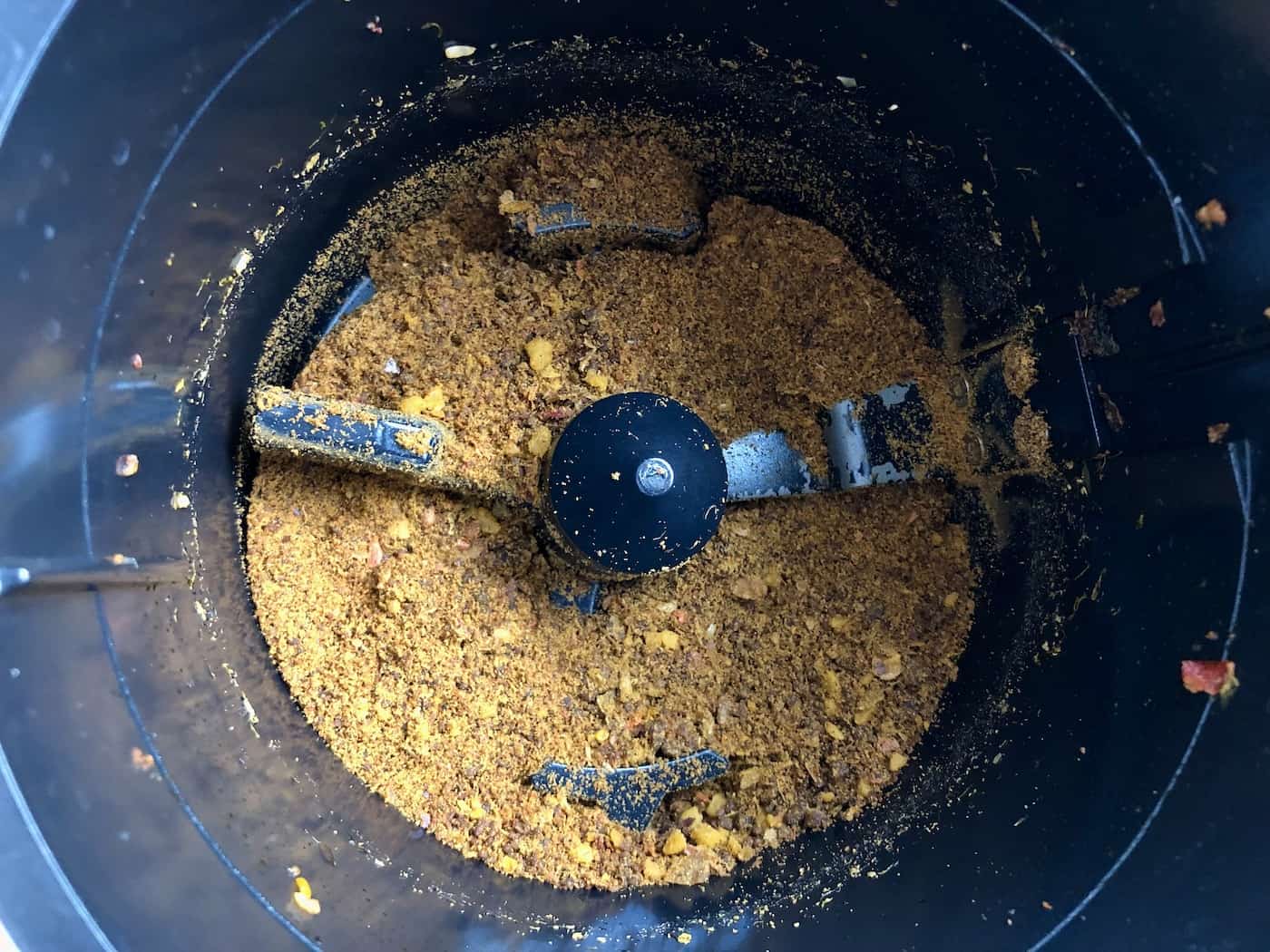
Example 3: Plate scrapings
